Pedal Through Seoul's Historic Wonders
Join us for a captivating free walking tour where I love riding a bicycle. Explore Seoul's rich history and vibrant culture at every stop!
Time
3 Hours
Stops
9 Places
Distance
?
Gyeongbokgung Palace
Begin your tour at Gyeongbokgung Palace, the largest and most beautiful of the Five Grand Palaces built during the Joseon Dynasty.

Gyeongbokgung Palace (Source: Google Maps)
Gyeongbokgung Palace, the largest of the Five Grand Palaces built during the Joseon Dynasty, is a significant historical site that showcases the grandeur of Korean architecture. Constructed in 1395, it served as the main royal palace and was the center of political power for over five centuries. The palace features beautiful gardens, stunning gates, and the iconic Geunjeongjeon Hall, where important state affairs were conducted. Visitors can witness the changing of the guard ceremony, a colorful spectacle that reflects Korea's rich heritage. The surrounding National Palace Museum of Korea and the National Folk Museum further enhance the cultural experience, providing insights into the lives of the royal family and the common people during the Joseon era.
Bukchon Hanok Village
Walk to Bukchon Hanok Village, a picturesque neighborhood filled with traditional Korean hanok houses, offering a glimpse into Seoul's past.

Bukchon Hanok Village (Source: Google Maps)
Bukchon Hanok Village is a charming neighborhood that offers a glimpse into Seoul's history with its well-preserved traditional Korean hanok houses. Dating back to the Joseon Dynasty, this area was once home to high-ranking officials and aristocrats. The village is characterized by its narrow alleys and picturesque views, making it a popular spot for both locals and tourists. Visitors can explore the unique architecture of the hanoks, which feature wooden beams and tiled roofs, and experience traditional Korean culture firsthand. Many of the houses have been converted into galleries, tea houses, and guesthouses, providing an opportunity for cultural immersion. The village also hosts various cultural programs, allowing visitors to participate in activities such as hanbok (traditional clothing) wearing and traditional craft-making.
Insa-dong Street
Explore Insa-dong, a vibrant street known for its antique shops, art galleries, and traditional tea houses, perfect for a cultural immersion.
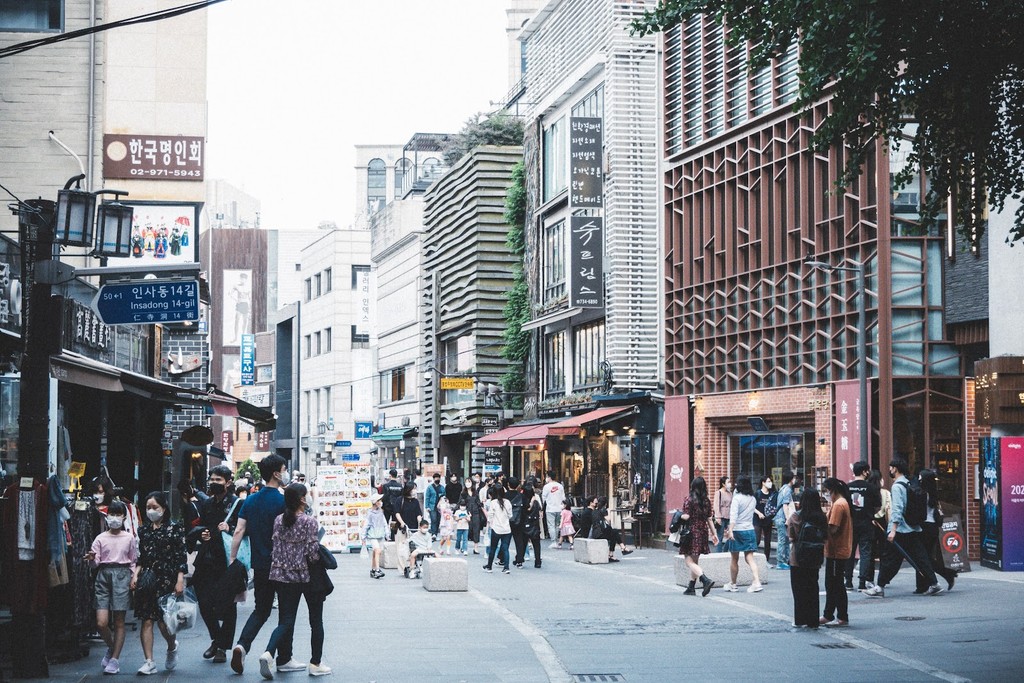
Insa-dong Street (Source: Google Maps)
Insa-dong Street is a vibrant cultural district known for its rich history and artistic atmosphere. This area has been a center for traditional Korean culture since the 14th century and is famous for its antique shops, art galleries, and traditional tea houses. Visitors can stroll along the main street and explore numerous shops that sell handcrafted goods, calligraphy supplies, and traditional souvenirs. Insa-dong is also a hub for contemporary art, featuring galleries that showcase works from both established and emerging artists. The street comes alive during cultural festivals, where visitors can enjoy performances, street food, and craft demonstrations. The blend of old and new makes Insa-dong a must-visit destination for anyone looking to experience the heart of Korean culture.
Jogyesa Temple
Visit Jogyesa Temple, the chief temple of the Jogye Order of Korean Buddhism, known for its beautiful architecture and serene atmosphere.
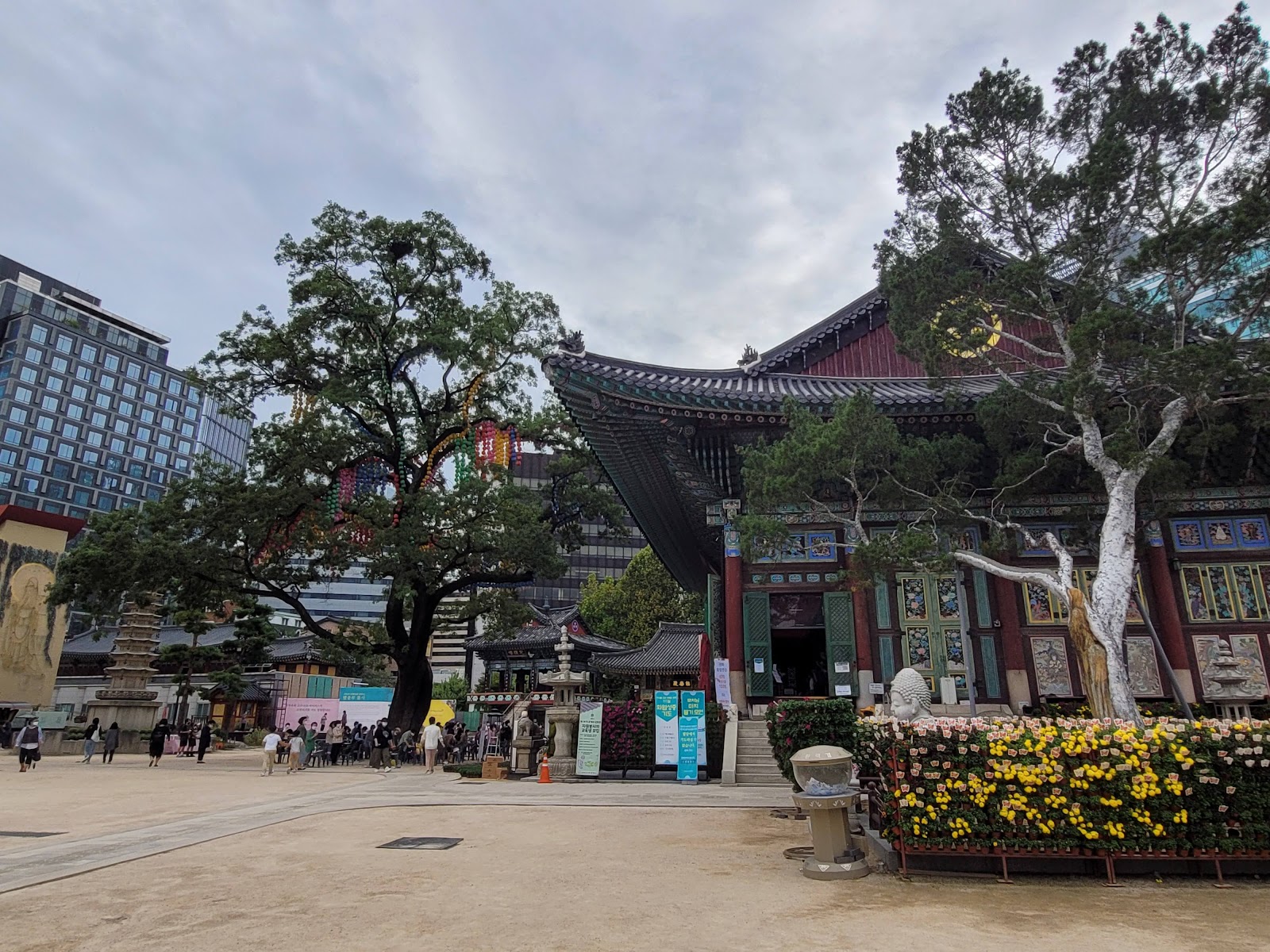
Jogyesa Temple (Source: Google Maps)
Jogyesa Temple is the chief temple of the Jogye Order of Korean Buddhism, renowned for its serene atmosphere and beautiful architecture. Established in the late 14th century, the temple has undergone several renovations, with its current structure reflecting a harmonious blend of traditional and modern design. The temple is adorned with stunning lanterns, particularly during the Buddha's birthday celebration, when thousands of colorful lanterns illuminate the grounds. Visitors can participate in meditation sessions and learn about Buddhist practices while enjoying the tranquility of the temple gardens. Jogyesa also serves as a cultural center, hosting various events and ceremonies that promote understanding and appreciation of Buddhism in Korea, making it an enriching experience for all who visit.
Cheonggyecheon Stream
Stroll along Cheonggyecheon Stream, an urban renewal project that offers a peaceful escape from the city's hustle and bustle.

Cheonggyecheon Stream (Source: Google Maps)
Cheonggyecheon Stream is a remarkable urban renewal project that transformed a once-polluted stream into a beautiful public space in the heart of Seoul. Spanning over 11 kilometers, the stream is lined with walking paths, gardens, and art installations, providing a peaceful escape from the bustling city. The restoration project, completed in 2005, has revitalized the area, making it a popular destination for both locals and tourists. Visitors can enjoy leisurely strolls along the water, relax in the shaded areas, and participate in various cultural events held throughout the year. The stream is also home to diverse wildlife, including fish and birds, showcasing the ecological revival of the area. Cheonggyecheon serves as a symbol of Seoul's commitment to sustainable urban development while preserving its natural beauty.
Gwangjang Market
Head to Gwangjang Market, one of Seoul's oldest traditional markets, to sample local street food like bindaetteok (mung bean pancakes) and tteokbokki (spicy rice cakes).
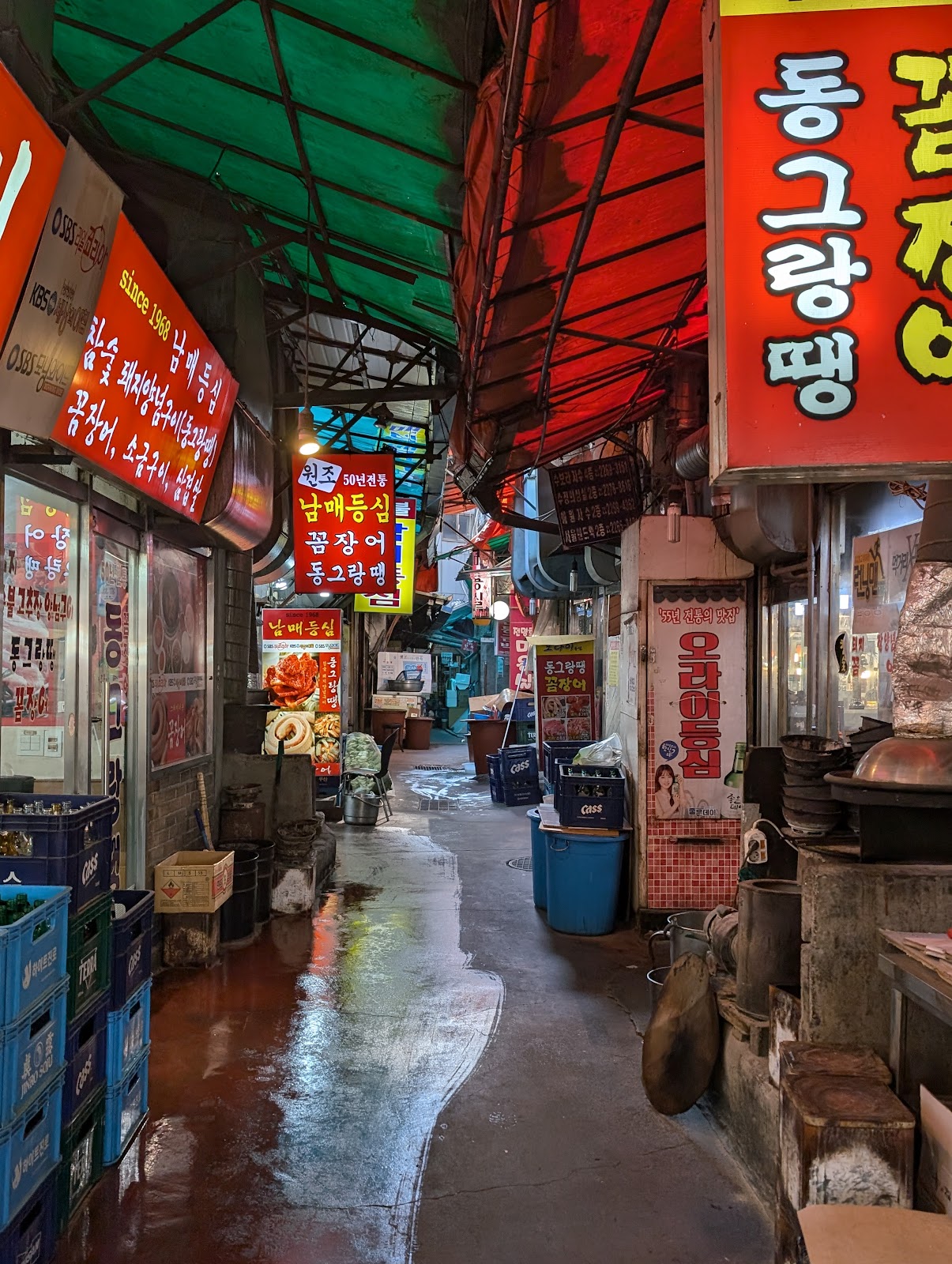
Gwangjang Market (Source: Google Maps)
Dongdaemun Design Plaza (DDP)
Discover the futuristic architecture of Dongdaemun Design Plaza, a major urban development landmark designed by Zaha Hadid.
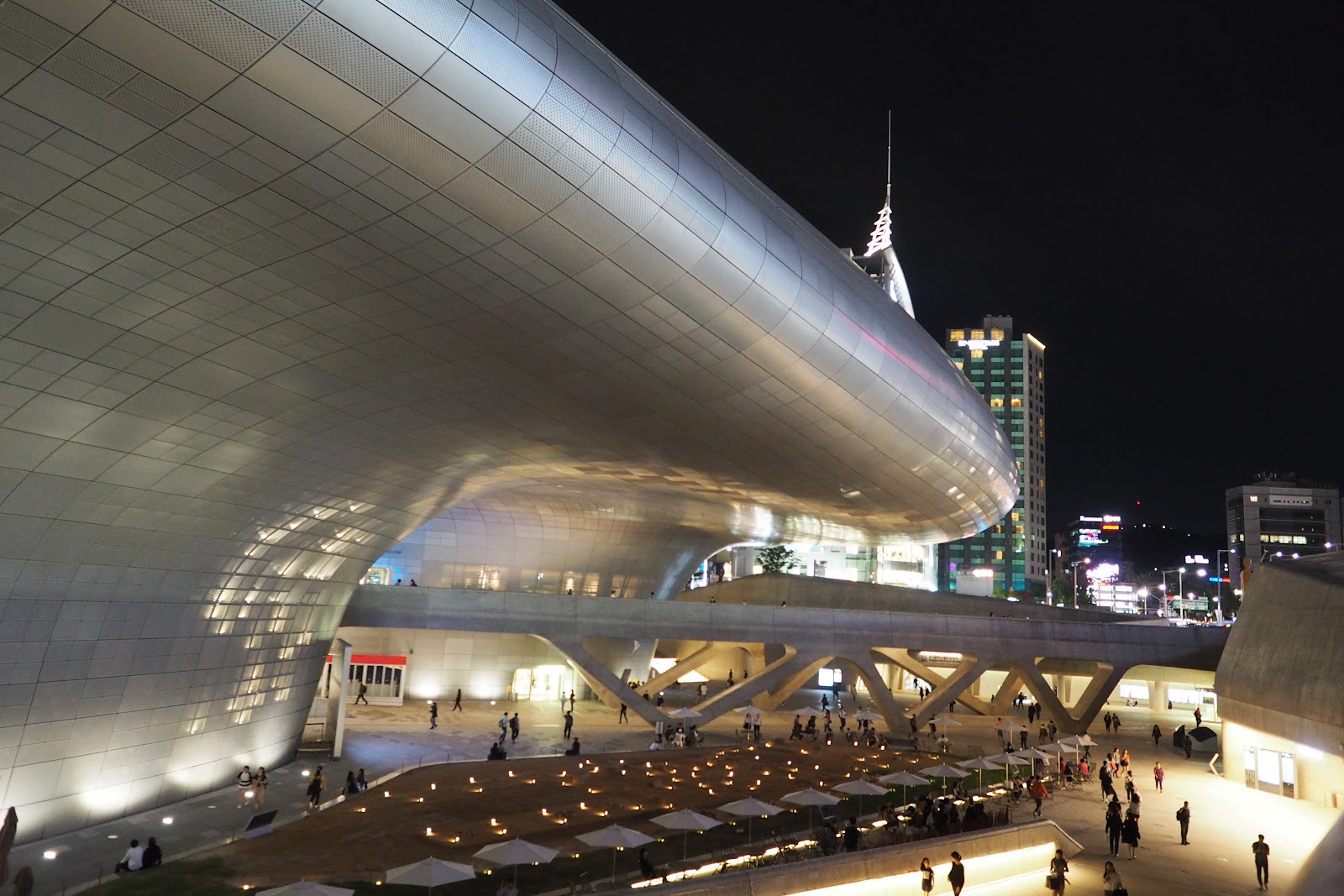
Dongdaemun Design Plaza (DDP) (Source: Google Maps)
Dongdaemun Design Plaza (DDP) is a landmark of modern architecture in Seoul, designed by the renowned architect Zaha Hadid. Opened in 2014, DDP serves as a cultural hub, hosting exhibitions, fashion shows, and design events. Its futuristic design features flowing curves and a seamless integration with the surrounding urban landscape. The plaza is equipped with cutting-edge facilities, including exhibition halls, a design museum, and an outdoor space that hosts various cultural activities. DDP has become a symbol of Seoul's creative spirit, attracting designers, artists, and innovators from around the world. The unique architecture and vibrant atmosphere make it a must-visit destination for anyone interested in contemporary design and culture.
Hangang Park (Yeouido Section)
Conclude your tour at Hangang Park, where you can rent a bicycle and enjoy a leisurely ride along the Han River, taking in the scenic views.
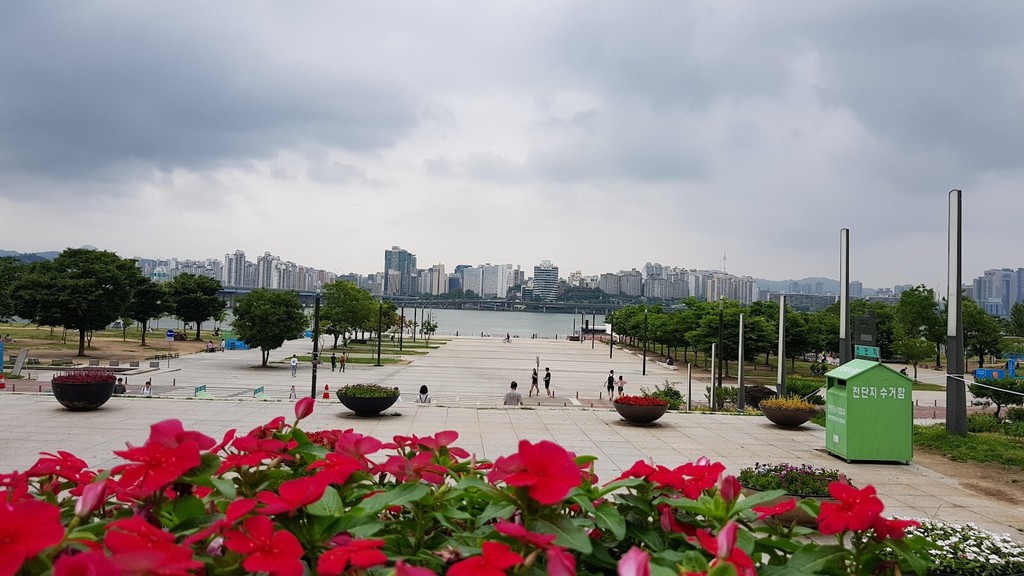
Hangang Park (Yeouido Section) (Source: Google Maps)
Hangang Park, particularly the Yeouido section, is a sprawling urban park that offers a perfect blend of natural beauty and recreational activities along the Han River. The park features well-maintained bike paths, picnic areas, and scenic spots for enjoying the stunning views of the river and the city skyline. It is a popular destination for both locals and tourists who wish to engage in outdoor activities such as cycling, jogging, and leisurely strolls. The park also hosts various events and festivals throughout the year, celebrating the vibrant culture of Seoul. With its lush greenery and tranquil atmosphere, Hangang Park provides a refreshing escape from the urban hustle, making it an ideal location for relaxation and recreation.
The Booth Brewing Co. (Yeouido)
End your tour with a refreshing craft beer at The Booth Brewing Co. in Yeouido, a popular spot for locals and tourists alike.
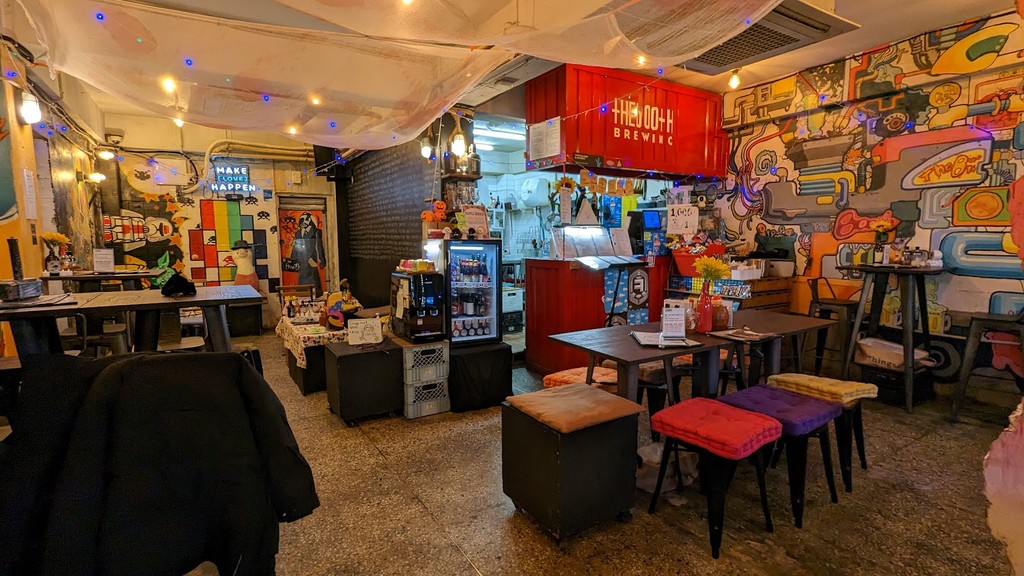
The Booth Brewing Co. (Yeouido) (Source: Google Maps)

Your travels, your rules.
Create your own Free Walking Tours.
Set your preferences, distances and anything you want to do or see.
Completely free, no payment required.